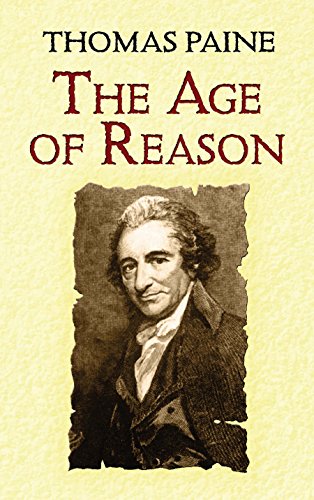The Quest for the Materialist Jesus: Part 1

Who or what is “the historical Jesus”? Put crudely, the historical Jesus is the figure historians reconstruct from behind the embellishments, mythmaking, and ideas attributed to him, that took place after his death. From the best sources we have, a full biography remains impossible. What historians have instead attempted to do is assess the extent to which it is possible to reconstruct the words and deeds of the figure who was active in Galilee and Judea sometime around the year 30 CE.
While there has been a steady, if underappreciated, tradition of western Marxist scholarly analyses of Christian origins, there has been very little on the reconstruction of the life of Jesus. This is remarkable given how significant the quest for the historical Jesus has been in western thought since the end of the eighteenth century. Before we turn to why western Marxist analyses are relatively absent and what a Marxist analysis might look like, a brief overview of the early days of this quest and its ongoing influence can be provided.
The Quest for the Historical Jesus
The most influential challenges to the historical reliability of the Gospel accounts came from Germanic scholarship. The conventional starting point has traditionally been the work of Hermann Samuel Reimarus (1694–1768), an Enlightenment thinker born in Hamburg. Reimarus’ fame in historical Jesus studies is due to extracts (Wolfenbüttel Fragments; hereafter, the Fragments) posthumously published by Gotthold Ephraim Lessing. Reimarus had kept his more provocative views quiet during his lifetime and Lessing likewise kept the authorship of the Fragments anonymous, such was the explosive nature of their content. The two most relevant Fragments concerned the purpose of Jesus and the disciples (published 1778) and the resurrection narratives (published 1777), both of which made sharp distinctions between Jesus and Christianity and critiqued inconsistencies in the New Testament texts.
For Reimarus, Jesus was a reformist figure at home in the Judaism of his day who preached repentance before the imminent coming of the kingdom of heaven, in much the same way as John the Baptist had before him. Jesus’ recognisably Jewish teaching involved, Reimarus argued, simple, humble, trustworthy, peaceable, merciful, ethical, and inward-looking pious behaviours, and the prioritisation of loving God and neighbour. On Reimarus’ reading, Jesus did not seek to start a new religion and did not look to introduce any new articles of faith. Reimarus’ Jesus did not want to do away with Jewish religion or practices such as sacrifice, circumcision, purity, or Sabbath. Rather, it was the emerging church after Jesus’ death which distanced itself from these practices.
Similarly, Reimarus claimed that Jesus took on various messianic titles but that these should not be confused with the Christian doctrine of the Trinity which was a later development. When Jesus used the term “Son of God,” he was doing so it in a way recognisable to Jews of his day, namely that it was a term employed paternalistically to refer to a person or people beloved of God, including a prophetic or kingly figure.

For Reimarus, when Jesus referred to the kingdom of God or heaven this too was a recognisably Jewish concept which involved the expectation of a kingdom established among Jews and expressed through their laws and with an understanding of God as their king. It was a concept that anticipated a future glorious kingdom in Jerusalem brought about through the Messiah when the Jews would be freed from the Roman yoke. And so, when Jesus entered into Jerusalem with his followers at the festival of Passover (Mark 11; Matthew 21; Luke 19), Reimarus suggested that this was seen as stirring up rebellion against the rulers and led to his death at the hand of the authorities.
This expectation of political redemption led to disappointment after Jesus was killed. The apostles then moved away from this hope for a powerful redeemer of Israel and developed a doctrine of humanity’s suffering saviour. Reimarus’ critique of the historical validity of resurrection accounts were part of his explanation that they too were a response to the unanticipated problem of Jesus premature death.
The publication of Reimarus’ Fragments effectively inaugurated the quest for the historical Jesus, at least as a sustained and serious intellectual enterprise. The historical Jesus was now to be viewed firmly in his original historical context. The extent to which he was different from (or similar to) the church that emerged in his name became a standard feature of theological scholarship by the end of the nineteenth century. But this was still controversial throughout the nineteenth century, especially through the work of the Protestant theologian, David Friedrich Strauss (1808–1874). In 1835–1836 Strauss published The Life of Jesus, Critically Examined in German (Das Leben Jesu, kritisch bearbeitet) which became most (in)famous for the argument that the miracles were a part of Christian mythmaking, later additions to the Gospels which should be removed from a critical understanding of the life of Jesus. Such was still the scandalous nature of this argument that it cost him his position at the University of Zürich.
Today, the ideas of Reimarus, Strauss, and others are not controversial, even if we might dispute the details and even if their approaches look dated in light of advancements made in the analysis of the Gospels. Disputes now typically vary over what type of figure Jesus was (social critic? end-times prophet? wisdom teacher? progressive liberal?) but are built on the foundations of late eighteenth and nineteenth century scholarship. We should see figures like Reimarus and Strauss as representing significant advancements in the study of history and human society, not least because they helped open up areas of study once off limits.
We should also see the controversies their theological and historical works provoked as part of a wider struggle of their time. We should understand these scholarly advancements as part of the consolidation of bourgeois power of the late eighteenth century and nineteenth century, gathering momentum in the build up to, and in the aftermath of, the American and French revolutions and their consequences. As has been argued in detail by Dieter Georgi and Halvor Moxnes, for instance, the most famous European biographies of the “earthly,” “human” Jesus the “great man” were a product of bourgeois nationalism, which challenged the presentation of the aristocratic, divine Christ of the old feudal order. Two centuries later, this bourgeois legacy is continued in liberal scholarship which has come to dominate the quest for the historical Jesus, particularly in North America. For all the differences of scholarly opinion, the emphasis is overwhelmingly on Jesus the great individual who acted with supreme agency.
A Different Tradition
While the Germanic bourgeois publications of the nineteenth century and their successors in liberal scholarship up to the present receive most attention, there were significant developments taking place elsewhere, including in emerging working-class and dissident circles. These reconstructions of Jesus were likewise critical of the presentations of an aristocratic, divine Christ of the feudal order but there was another tendency which turned this “human” Jesus against bourgeois dominance. In Britain, this understanding owes much to Thomas Paine who, in The Age of Reason (Part I published in 1794; Part II in 1795), controversially argued that the Gospels were written many years after the purported events and not by Matthew, Mark, Luke, and John, and not by eyewitnesses.
In addition to criticising the historical plausibility of miracle stories, he argued that the Gospels are contradictory, distorted, and anachronistic accounts. About as much as we can know of the historical figure of Jesus, Paine suggested, was that he was a preacher of the “equality of man,” opposed to priestly corruption, and likely advocated the freeing the Jewish people from Roman rule. After Jesus’ execution on the grounds of sedition and conspiracy, later (non-Jewish) Christians created a mythological system whereby this Jesus was elevated and deified.

Age of Reason was cheap and found a sympathetic audience among labourers, artisans, and radicals (see, e.g., here and here). The influential Paine-style understanding of Jesus was then taken up in reaction to the economic hardships following the Napoleonic Wars, such as by Thomas Evans, a follower of the revolutionary Thomas Spence. Paine’s Jesus was also a major reference point for Chartists in the mid-nineteenth century. But Paine was not the only writer on the historical Jesus that the working class were reading. In 1845, Engels wrote that socialists were active in the education of the working class in England, including in the supply of cheap translations of French and German literature.
One such publication was Strauss’s Life of Jesus, first published a decade earlier (and which Engels had read). The cheap, serialised translation was circulated in the early 1840s and associated with the journalist and radical dissenting Christian, Henry Hetherington. This translation has been largely ignored in the historical of scholarship and overshadowed by the English translation of the fourth edition by the novelist George Eliot (Mary Ann Evans) in 1846. Whereas Eliot’s translation was for a dissenting middle-class audience, the Hetherington version was squarely aimed at a working-class audience, which goes some way to explaining why one has since been remembered over the other.
Jesus the revolutionary
This working-class audience for and interest in historical Jesus studies has been overlooked, despite plenty of material being available in the Chartist press and its precursors in the 1830s. Of course, some Chartists were more theologically radical than others, but there is a consistent picture of Jesus that emerges from the newspapers, often at odds with the politics of the more conservative liberal Strauss. This Jesus of working-class interpretation was from a labouring or poor background who identified with his own kind. He was critical of exploitation, hypocrisy, tyranny, and the rich. Jesus’ opponents were typically understood in class terms too. Opposition from priests and other groups were categorised in near timeless class-based terms (middle class, upper class) as first-century equivalent of politicians, aristocrats, and church authorities (of varying denominations) in the nineteenth century.
Against such class-based opposition, Jesus the Chartist-style martyr was said to have put up a dignified front, emphasising egalitarianism, virtue, morality, humility, discipline, and neighbourliness. It was believed that Jesus met the typical fate of the benevolent reformer—persecution and execution—but not everyone thought that he passively accepted his fate. Sometimes Jesus was in line with those Chartists who emphasised “moral force”, but at other times Jesus was more menacing and in line with those Chartists who emphasised “physical force.” Here I summarise articles from, e.g., Poor Man's Guardian, Northern Star, Northern Liberator, The Charter, dating from 1831 to 1852.

Whether right, wrong, or somewhere in between, we should see such late-eighteenth and nineteenth-century reconstructions as a significant development in what has become a recurring popular understanding of the historical Jesus as a radical, oppositional, even revolutionary figure. Yet the relative absence of prominent scholarship on Jesus in the western Marxist tradition over the twentieth century is even more striking against this backdrop. There nothing like the equivalent of, for instance, the influence the British Marxist historians had in university-based history departments. This dearth of comparable scholarship is likely due to the serious study of the foundational figure of Christianity having been located in university theology departments and theological seminaries where, particularly during the Cold War, the hostility towards Marxism (assumed to be atheistic and reductionist) has been most acutely felt.
Consequently, for all the disagreements among scholars, the resulting portraits of Jesus have typically been idealistic to an extreme degree. There is a dominant tendency portraying Jesus as a great man of history who simply turned up and shaped the world around him, and whose ideas and actions had little connection to socio-economic changes happening at the time. Even when there have been attempts to locate Jesus in a world of economics and social structures, these are usually carried out to highlight his supposed theological distinctiveness or to engage in debates about whether the Galileans were especially oppressed thereby setting the scene for Jesus to provide a radical theological alternative.
This needs to be countered. The once thriving class-based analysis of the historical Jesus of the late-eighteenth and nineteenth century needs to be revitalised, updated, and developed further by historians with historical materialist interests. A historical materialist understanding of Jesus in a world of competing class interests obviously turns such idealistic, liberal, or neoliberal readings of Jesus the great man on their head.

James Crossley
James Crossley is Professor of Bible, Society and Politics at MF Oslo, and the Academic Director of the Centre for the Critical Study of Apocalyptic and Millenarian Movements. He writes mainly on religion in English political history and on the historical Jesus.
